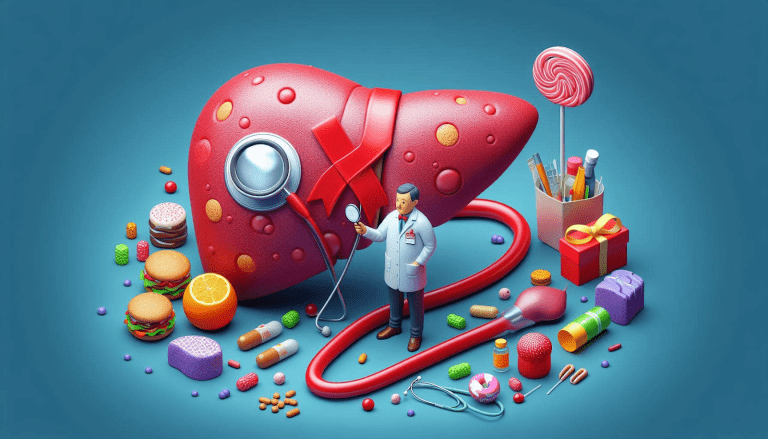ICD-10 Hypertensive Urgency: A Serious Condition Requiring Prompt Medical Attention

In the realm of cardiovascular health, hypertension, or high blood pressure, is a prevalent condition that affects millions of individuals worldwide. While many cases of hypertension can be managed through lifestyle modifications and medication, some instances require immediate medical intervention. One such scenario is known as hypertensive urgency, a classification recognized by the International Classification of Diseases, Tenth Revision (ICD-10).
ICD-10: A Standardized Coding System for Medical Conditions
The ICD-10 is a comprehensive coding system developed by the World Health Organization (WHO) to facilitate the accurate documentation and reporting of medical diagnoses, symptoms, and procedures. This standardized system ensures consistent communication among healthcare professionals, facilitates epidemiological research and aids in the allocation of healthcare resources.
Within the ICD-10 framework, hypertensive urgency is classified under the codes I16.0 (Hypertensive urgency) and I16.9 (Hypertensive crisis, unspecified). These codes help healthcare providers accurately identify and document cases of hypertensive urgency, enabling proper treatment and follow-up care.
Understanding Hypertensive Urgency
Hypertensive urgency is a severe form of hypertension characterized by extremely high blood pressure readings that require prompt medical attention but do not pose an immediate risk of life-threatening complications. Specifically, hypertensive urgency is defined as systolic blood pressure (the top number) greater than 180 mmHg or diastolic blood pressure (the bottom number) greater than 120 mmHg.
While these elevated blood pressure levels are not immediately life-threatening, they can lead to severe complications if left untreated. Hypertensive urgency can cause damage to various organs, including the heart, kidneys, brain, and eyes, increasing the risk of stroke, heart attack, and other cardiovascular events.
Symptoms and Risk Factors
In many cases, hypertensive urgency may not present with any obvious symptoms, which is why regular blood pressure monitoring is crucial. However, some individuals may experience headaches, dizziness, nosebleeds, chest pain, or shortness of breath when their blood pressure reaches dangerously high levels.
Several risk factors can contribute to the development of hypertensive urgency, including:
1. Uncontrolled or poorly managed chronic hypertension
2. Medication non-compliance or abrupt discontinuation of antihypertensive medications
3. Certain medical conditions, such as kidney disease, sleep apnea, or endocrine disorders
4. Lifestyle factors, including a high-sodium diet, excessive alcohol consumption, and obesity
Differentiating Hypertensive Urgency from Hypertensive Emergency
It is crucial to distinguish hypertensive urgency from a related but more severe condition known as hypertensive emergency. A hypertensive emergency is characterized by extremely high blood pressure readings accompanied by acute organ damage, such as stroke, heart attack, pulmonary edema, or aortic dissection. This condition requires immediate medical intervention, often involving hospitalization and aggressive treatment to lower blood pressure rapidly.
In contrast, hypertensive urgency does not involve acute organ damage but still requires prompt medical attention to prevent potential complications and lower the risk of progression to a hypertensive emergency.
Treatment and Management of Hypertensive Urgency
The primary goal in managing hypertensive urgency is to gradually lower blood pressure to a safe range within 24 to 48 hours. This controlled reduction in blood pressure helps prevent potential complications while avoiding the risks associated with an abrupt and excessive drop in blood pressure.
Treatment typically involves the administration of oral antihypertensive medications, such as angiotensin-converting enzyme (ACE) inhibitors, angiotensin II receptor blockers (ARBs), calcium channel blockers, or diuretics. The specific medication and dosage will depend on the individual’s medical history, comorbidities, and overall health status.
In some cases, intravenous (IV) antihypertensive medications may be required, particularly if the patient is unable to tolerate oral medications or if the blood pressure remains dangerously high despite oral therapy.
Importance of Follow-up Care and Lifestyle Modifications
Once the acute phase of hypertensive urgency has been managed, individuals need to follow up with their healthcare provider for ongoing monitoring and treatment. Lifestyle modifications play a crucial role in preventing future episodes of hypertensive urgency and reducing the risk of long-term complications.
These lifestyle changes may include:
1. Adopting a healthy, low-sodium diet rich in fruits, vegetables, and whole grains
2. Engaging in regular physical activity and maintaining a healthy weight
3. Limiting alcohol consumption and quitting smoking
4. Managing stress through relaxation techniques or counseling
5. Adhering to prescribed medication regimens and attending regular check-ups
By implementing these lifestyle changes and working closely with their healthcare team, individuals who have experienced hypertensive urgency can improve their overall cardiovascular health and reduce the risk of future complications.
Raising Awareness and Promoting Early Intervention
Despite its potential severity, hypertensive urgency is often overlooked or misunderstood by the general public. Raising awareness about this condition and the importance of regular blood pressure monitoring is crucial for early intervention and prevention of potential complications.
Healthcare providers play a vital role in educating patients about the risks associated with uncontrolled hypertension and the need for prompt medical attention in cases of hypertensive urgency. By empowering individuals with knowledge and encouraging proactive self-care, healthcare professionals can contribute to better outcomes and improved overall cardiovascular health.
In conclusion, ICD-10 hypertensive urgency is a serious condition that requires prompt medical attention to prevent potential complications and reduce the risk of progression to a hypertensive emergency. By understanding the classification, symptoms, and treatment approaches outlined in the ICD-10 coding system, healthcare providers can effectively manage and document cases of hypertensive urgency. Raising awareness, promoting lifestyle modifications, and encouraging ongoing follow-up care are essential steps in improving outcomes and reducing the burden of hypertension-related complications.





